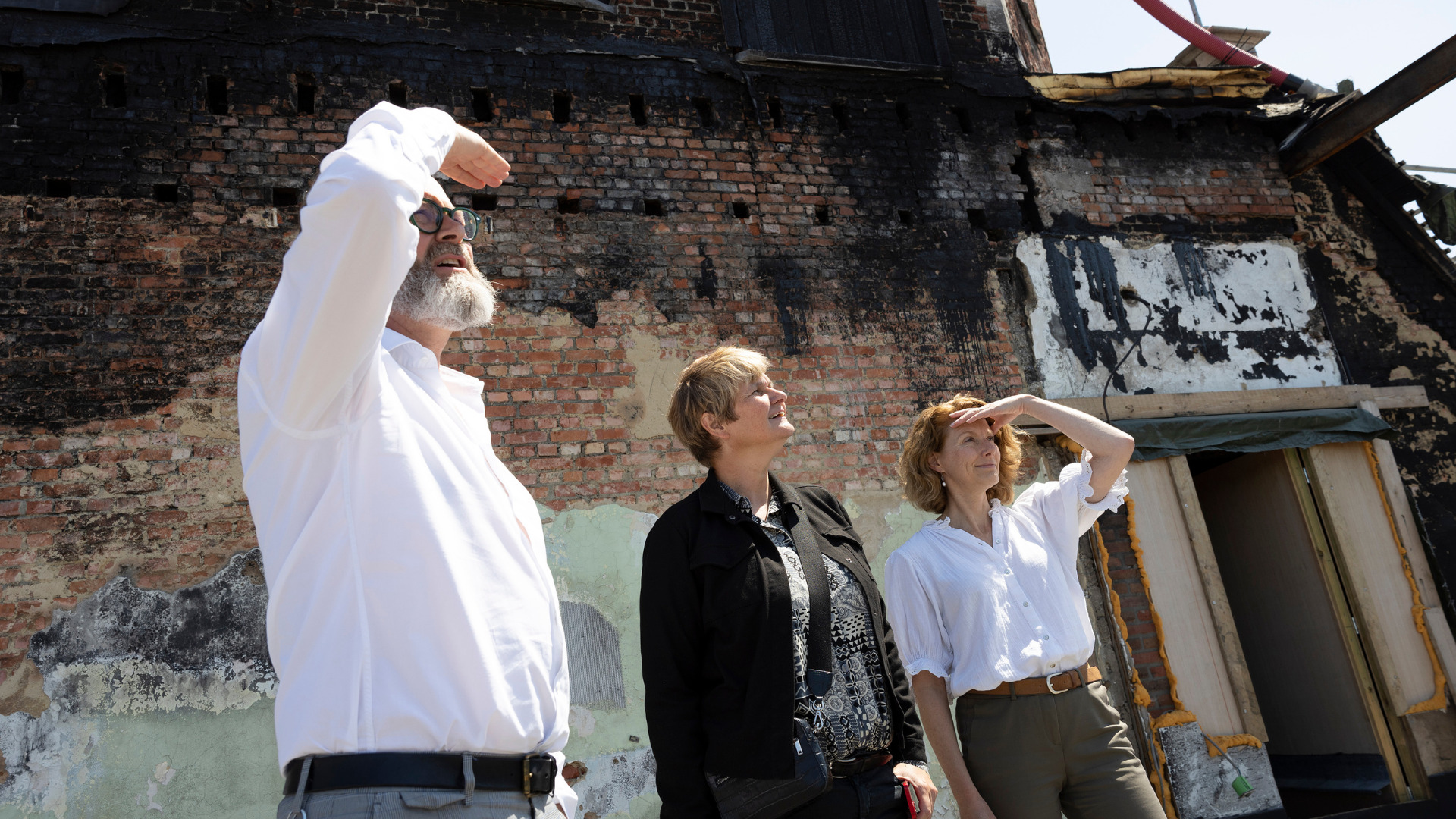The sixth of July marks the first anniversary of the fierce fire that broke out in the Hof van Liere. How far along are the repairs? And what will the redesigned office floors look like? ‘We are opting for a contemporary design with more light, more meeting places and plenty of flexi-places.’
The heart of our university community bled when on 6 July 2022, a fire razed the roof and upper floor of the nearly hundred-year-old Building B. Besides the immense material damage, the impact on day-to-day operations was also significant: the Faculty of Business and Economics (FBE) had to rush to find new accommodation. But the Faculty of Arts (FLW) also had to move: as a result of hours of firefighting, the adjacent Building D had suffered significant water damage.
A year later, the affected buildings lie empty and desolate. ‘Currently, all floors have been stripped of their flooring, wall and ceiling coverings’, says Lieven Willems, head of the Infrastructure Department. ‘In the coming months, we will restructure the concrete skeleton of Building S.B according to contemporary standards. Starting in the autumn, we will systematically redecorate the indoor spaces, starting with Building S.D.’ With a bit of luck, that wing will be ready by the week with no classes in February 2024, but that timing is subject to change. Building S.B will not be finished until later. The lower three floors will be tackled first: placing the new roof and finishing the upper two floors will happen later.

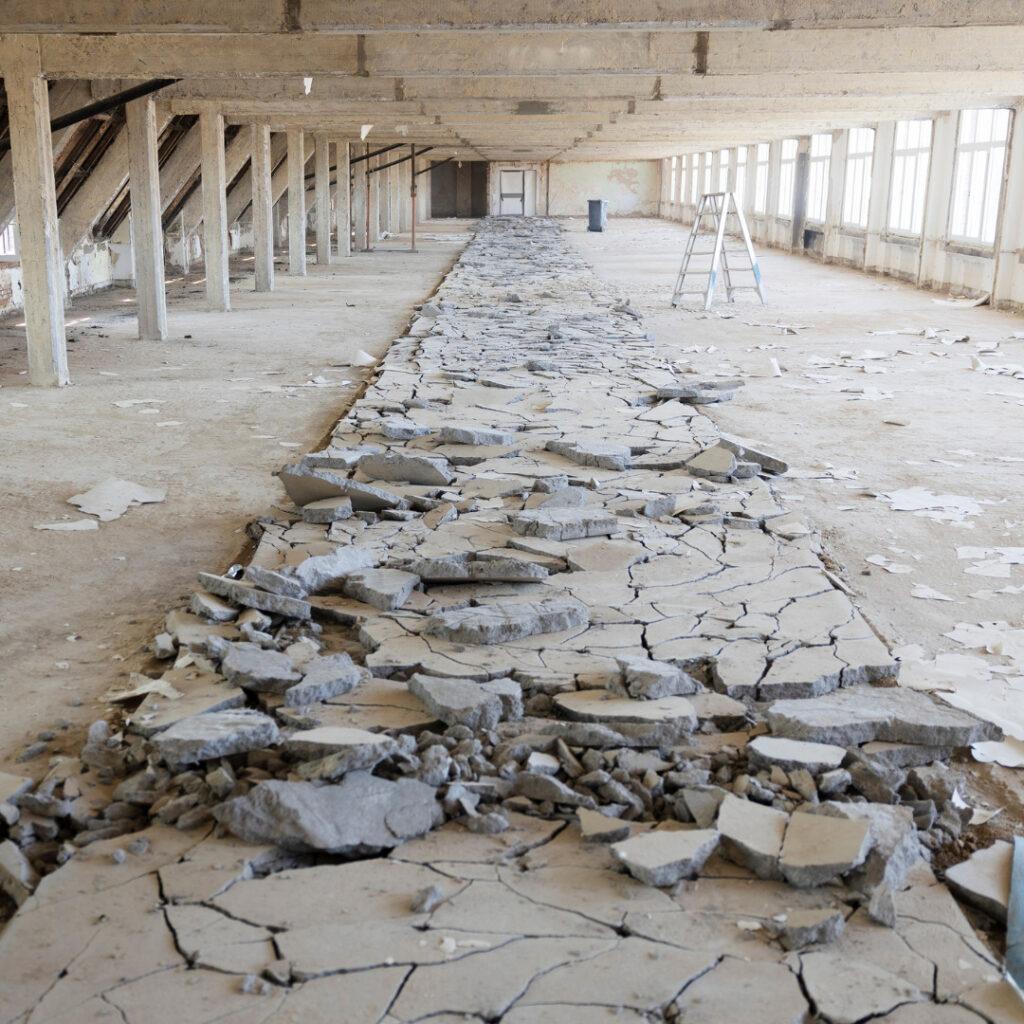
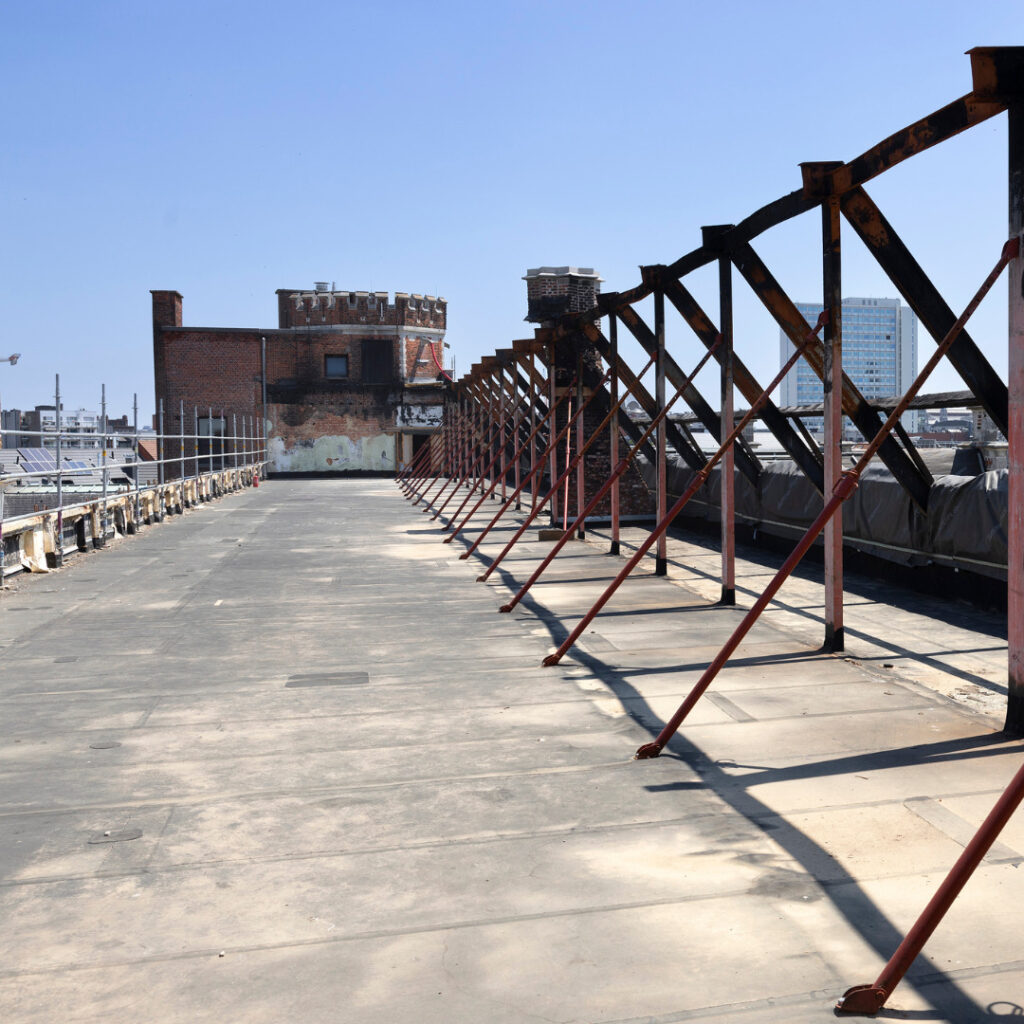
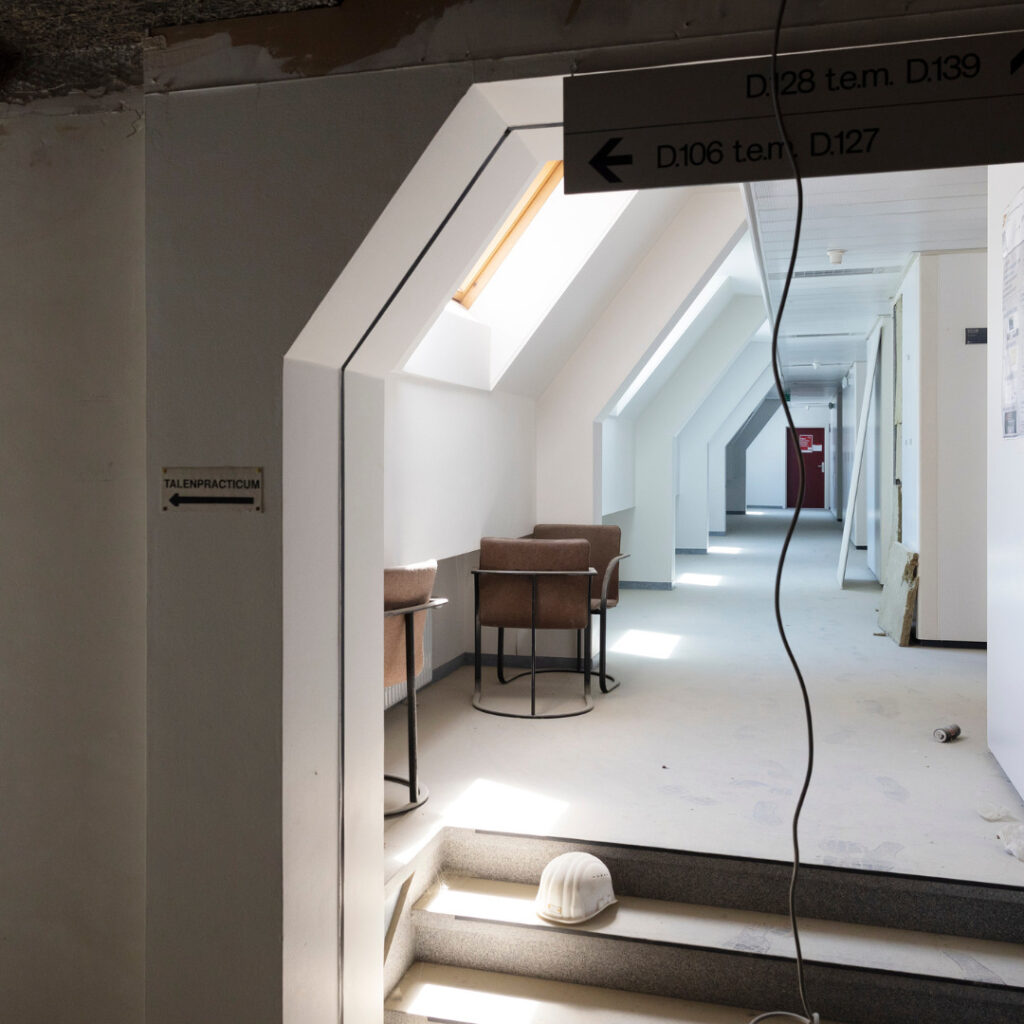
A new office concept
In the meantime, FBE and FLW found a place to stay at the Brain Embassy, a coworking space in the Theatre Building on Italiëlei. A stopgap solution, although the bright and contemporary office landscape does not really feel like a downgrade. ‘When we started brainstorming on the new layout with the Infrastructure Department and the interior design firm in the autumn, we were inspired by the Brain Embassy. We deliberately broke away from what was there before to redesign the space in the best possible way’, Tinne Borremans says, FBE faculty director.
The static working environment with fixed workstations will give way to a more flexible and modern system with many meeting places, a pleasant lounge, coworking space, bookable flexi-places and individual offices. Tinne: ‘Depending on the task you want to perform, you can choose where to sit. That’s how you can get to know each other better. The strict division by department is also disappearing, leaving more room for chance encounters. This enhances the social dynamic.’

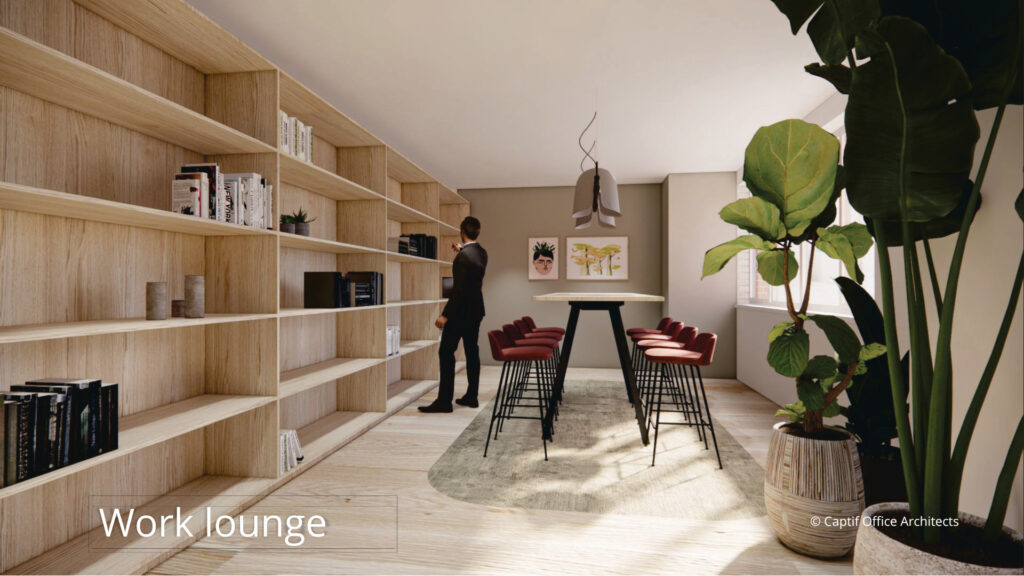
But there is still some freedom of choice, Virginie Coucke stresses, FLW faculty director. ‘You can choose whether to sit in a separate room or at a long table. And FLW employees who come to the office four or five days a week will still be able to get a permanent workplace.’
There will also be more natural light in the renovated buildings, with glass panes instead of traditional interior walls. This makes the working environment more attractive and leads to more social interaction, as you can easily see who is sitting where. The individual offices will have opaque window film to let in light while also ensuring privacy.
Cooperation with the architectural firm went very smoothly. ‘The first proposal proved to be an instant hit. They had read our minds, so to speak’, Tinne laughs.
Saving what can be saved
A year ago, no one expected that the repairs to take so long. It has already proven to be a long journey with many unpredictable factors. Just re-housing the items not affected by the fire took weeks. ‘During that first period, it was all hands on deck to save what was left to save, such as books, furniture and ICT equipment’, Lieven looks back. ‘In time, the corridors were filled with rows of boxes. All that material ended up in a warehouse in Stijfselrui.’ Recovering all that stuff was an undertaking in and of itself. Virginie: ‘Shortly after the fire, we were allowed to recover our personal belongings from the affected offices, while accompanied by a safety expert. Later we could make an appointment to retrieve and sort our work materials from the warehouse in Stijfselrui. For all that, we could turn to logistics staff member Wesley Thys, who did a good job organising everything.’
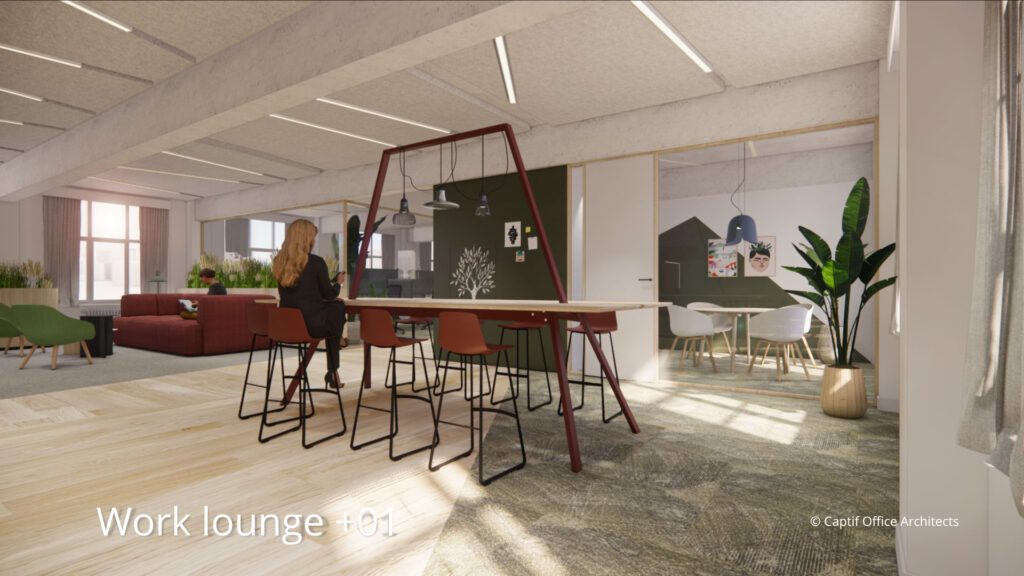
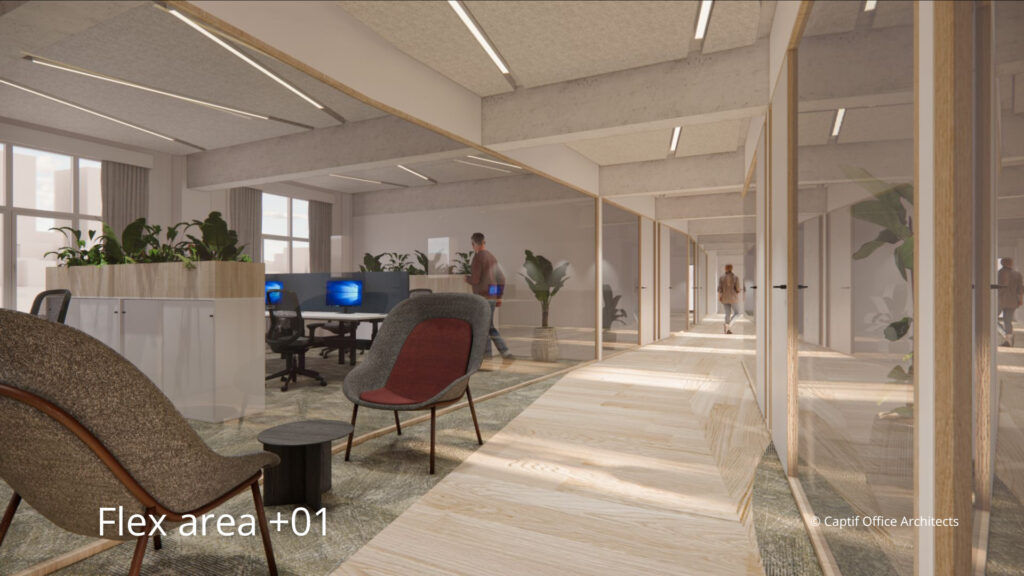
Placing all the retrieved books in stock for the duration of the repair works was not feasible. ‘Our professors were unfortunately forced to do a “major cleaning” and parted with most of their books. Quite a sacrifice’, Tinne says.
To keep everything on track, a fire coordination meeting was started shortly after the fire, which was organised twice a week. Lieven: ‘Besides the faculties and departments affected, the Legal Services, Communications Department, library, Health and Safety Department and ICT Department were also present for the meetings. This allowed us to keep everyone well-informed and to respond quickly.’
Expect the unexpected
A huge amount of work has been done over the past year. Yet the actual reconstruction has not yet started. ‘This isn’t out of the ordinary, because at each step, a consensus has to be reached between lawyers and experts from a dozen or so parties, the judicial expert, the domain expert and so on. A world with its own dynamics and rhythm that was completely new to us’, Lieven says.
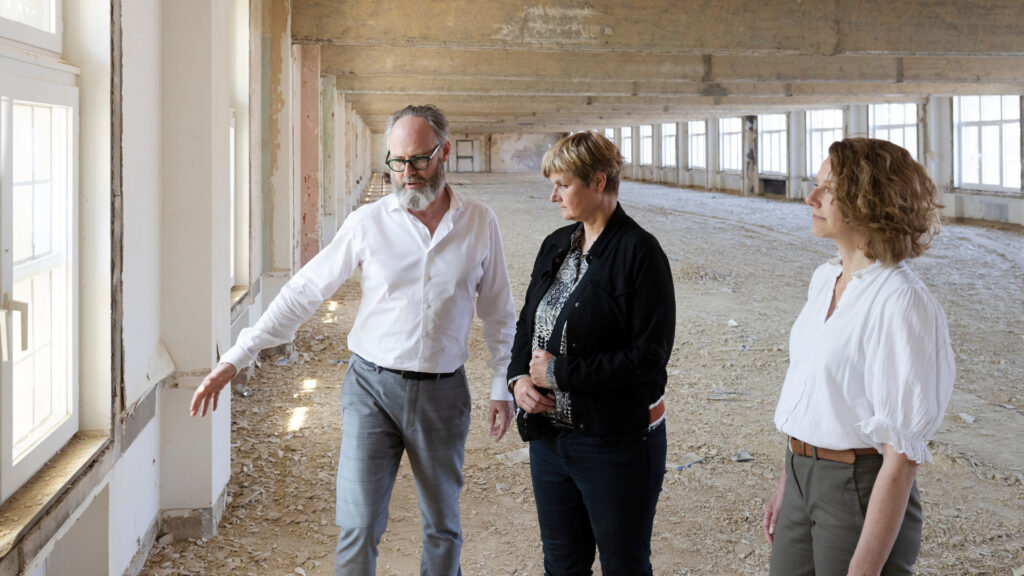
That unexpected issues appear in cases like this one is perfectly normal. Lieven: ‘We constantly have to shift gears. For example, initially there was an agreement that in Building S.B only the internal walls would have to be removed. The flooring could stay. But we later discovered that the sand bed on which the floors lay was still soaking wet from the water used to extinguish the fire. As such, we decided to also remove the entire flooring. This freed up the entire concrete skeleton of Building S.B and presented an opportunity to adapt the concrete floors and beams to contemporary standards. This was not strictly necessary: had the walls and floors remained, it would not have been an issue. But now we could make structural changes, and we are happy we took advantage of that opportunity.’ He prefers not to comment on the exact cost, ‘but either way, it’ll run up to millions of euros.’
‘Everyone adapts’
Flexibility has been the key word over the past year. The fact that students and lecturers have to move to different classrooms time and again is the biggest difficulty, according to Tinne. It also requires a lot of energy and creativity from the people responsible for the timetables. Furthermore, because of the temporary move to the Theatre Building, there is less interaction with students. In addition, FLW staff especially miss its well-stocked bookshelves, Virginie suspects. ‘Working with physical books is an important aspect at our faculty. That we now have to limit ourselves to a small selection takes some getting used to. But everyone adapts, including to the fact that some of our colleagues now have to work from home more often.’

Yet the impact of the fire is not only negative. Tinne and Virginie are eagerly looking forward to the brand-new office spaces. ‘Building S.D is a beautiful space that will fully come into its own after the renovation. In that sense, you could also see past events as an opportunity’, Virginie concludes.


